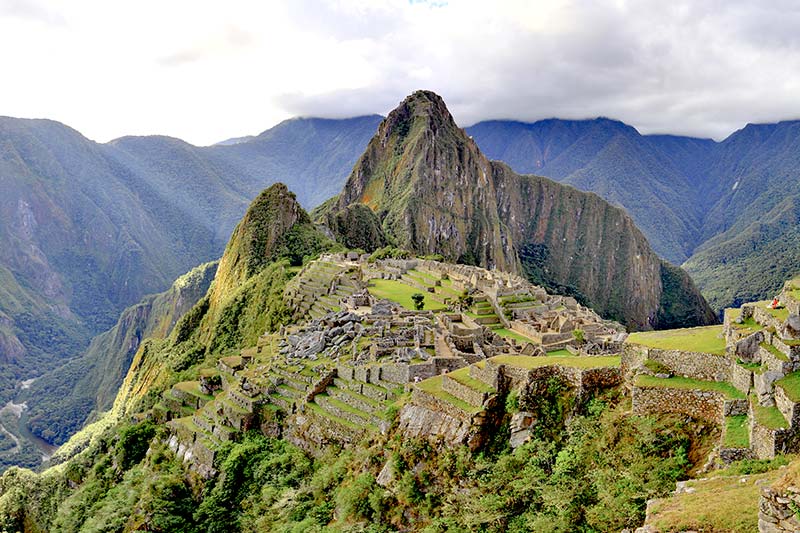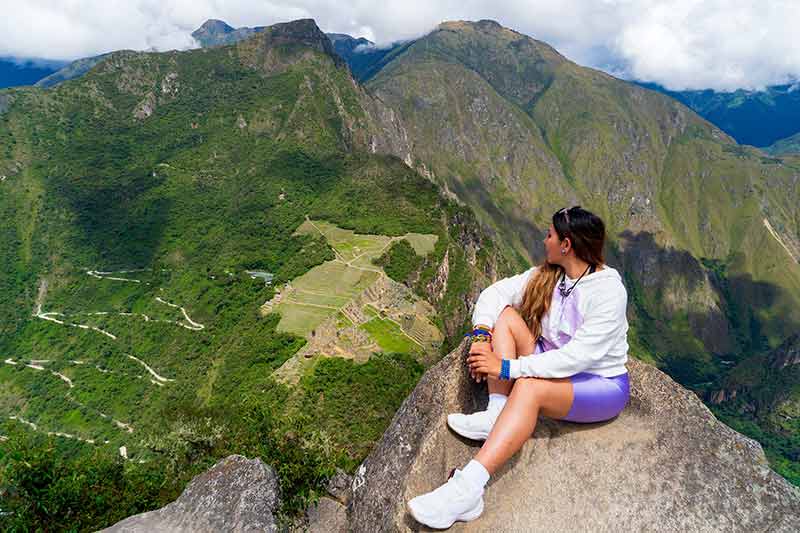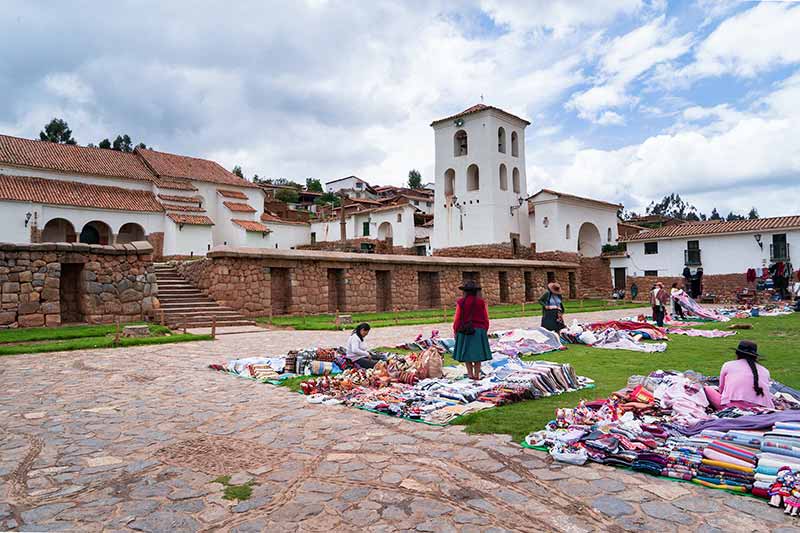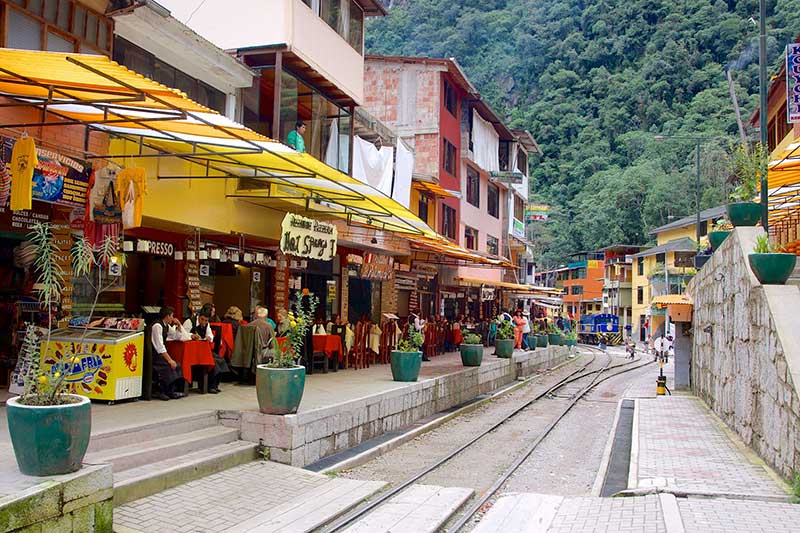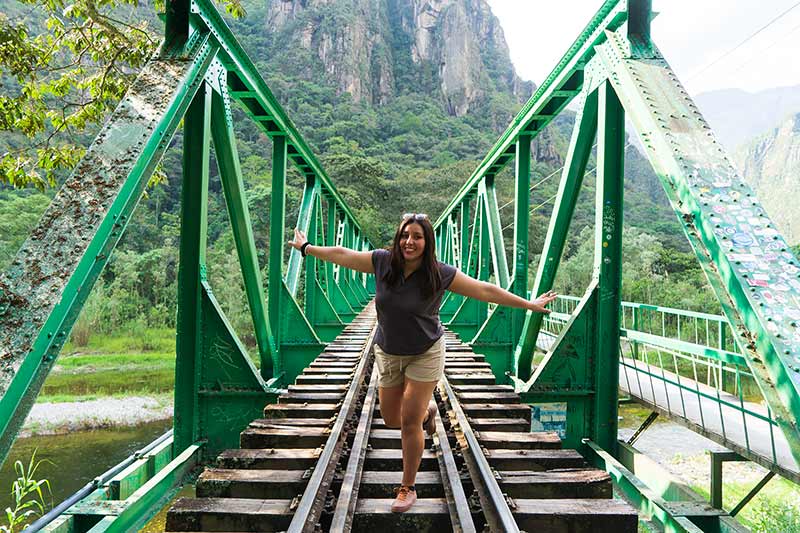10 reasons to return to Machu Picchu
Machu Picchu is not only one of the most visited destinations in the world, but also one of the places where the most people return. It’s not just because the Wonder of the World impressively captivates its visitors, making them return to where they felt freedom and happiness, but also because it offers 10 different tickets, each providing unique experiences, such as visiting the Huayna Picchu mountain. Each experience is marked by a range of emotions and surprises. Discover these and other reasons to return to Machu Picchu.
- The mystical energy of Machu Picchu
- The natural and architectural beauty of Machu Picchu
- The legendary Inca Trail
- Climbing Huayna Picchu mountain
- Exploring the Sacred Valley of the Incas
- The adventure of the Inca Jungle tour
- Discovering the town of Aguas Calientes
- Traveling to Choquequirao
- Alternative route via the Hydroelectric station to Machu Picchu
- The ten different routes in Machu Picchu
- Frequently Asked Questions
The 150 constructions in Machu Picchu
The archaeological site of Machu Picchu has more than 150 stone constructions over five hundred years old. The most famous buildings are located in the religious sector, such as: the Temple of the Sun, the Intihuatana, the Main Temple, the Sacred Rock, the Temple of the 3 Windows, the Temple of the Condor, and the Inca House. Additionally, Machu Picchu is made up of hundreds of terraces and agricultural platforms, which have underground structures and channels. It is estimated that 60 percent of the buildings in the Inca citadel are underground. Because of this, despite several earthquakes and the passage of time, the Inca llaqta remains in good condition.
1. The Mystical Energy of Machu Picchu
- Machu Picchu was an urban and religious citadel dating back to the Inca era, approximately the 15th century.
- It is surrounded by vast biodiversity, as well as immense mountains or ‘Apus’ which the Incas worshiped with great fervor.
- Many of its constructions are oriented towards the worship of their gods, which is why rituals and sacrifices were performed within Machu Picchu.
- Today, it is estimated that about one and a half million visitors tour its impressive stone buildings each year.
- Due to its geographical location and its relationship with the Inca gods, the Wonder of the World is a place where a great amount of energy accumulates.
- It is believed that there are specific sites within the Inca enclosure where this energy can be felt more strongly, such as the Sacred Rock or the Solar Clock of Machu Picchu (Intihuatana).
- Captivated by this mysterious energy, many tourists return to the Inca Citadel to recharge their vitality.
2. The Natural Beauty of Machu Picchu
- Machu Picchu was built on the eastern part of the Andes Mountain Range.
- It is located at 2,430 meters above sea level, surrounded by immense mountains and the characteristic greenery of Peru’s subtropical region.
- It was no coincidence that the Incas built an urban and religious center there, it was due to its mystical geography.
- Next to Machu Picchu is the Urubamba River, one of the reasons why the Sacred Valley is so prosperous, and it also adds great beauty to the landscape.
- This territory is also home to hundreds of animal species, which you can spot if you explore the areas surrounding Machu Picchu.
- Due to its altitude, mornings bring many clouds to Machu Picchu, which infuse a lot of mysticism and beauty, an unforgettable landscape.
- Traveling at different times of the year offers very different landscapes; seeing it among the clouds, under the rain, and in the sun’s rays are experiences you must live.
3. The Legendary Inca Trail
- One of the most incredible adventures in Machu Picchu is the 4-day, 3-night hiking route known as the Inca Trail.
- In total, this hike along ancient Inca paths covers 39.6 kilometers through high Andean and tropical landscapes until arriving directly at the Wonder of the World from the Sun Gate.
- During the journey, you will visit exclusive archaeological sites, as well as walk historic trails full of stunning landscapes. The nights under the stars are one of the unforgettable moments.
- It is known as one of the top 5 hiking routes in the world. However, due to high demand for permits, it is difficult to be one of the adventurers who complete the trek.
- Many people return to Cusco solely to do the Inca Trail. To secure an entry ticket, it is recommended to book up to 4 or 5 months in advance.
- If you cannot find availability for this tour, or if your time is limited, you can book the 2-day Inca Trail tour. This shorter alternative option also allows you to walk the historic trails and reach Machu Picchu through the mythical Inti Punku entrance.
Differences between the classic 4-day Inca Trail and the short 2-day version
| Inca Trail to Machu Picchu | 4-Day Inca Trail | 2-Day Inca Trail |
|---|---|---|
| Distance | 39 kilometers | 13 kilometers |
| Maximum altitude | 4,215 meters above sea level (Warmiwañusca pass) | 2,745 meters above sea level (Inti Punku entrance) |
| Minimum altitude | 2,040 masl (Aguas Calientes town) | 2,040 masl (Aguas Calientes town) |
| Inca constructions | Llactapata, Runkurakay, Sayacmarca, Phuyupatamarca, Wiñayhuayna, Inti Punku, and Machu Picchu. | Chachabamba, Wiñayhuayna, Inti Punku, and Machu Picchu. |
| Difficulty | High | Moderate |
| Campsites | 3 nights camping under the stars | 1 night in a tourist hotel in Aguas Calientes |
| Tour price | Approximately 800 USD | Approximately 600 USD |
4. Climbing Huayna Picchu Mountain
- One of the most popular adventures at Machu Picchu is offered by Huayna Picchu.
- This perpendicular mountain crossed by ancient Inca paths along the edge of steep cliffs is undoubtedly an unforgettable experience.
- The required ticket is Machu Picchu + Huayna Picchu (route 3A), and it needs to be booked 2 to 3 months in advance.
- So much so, that many tourists consider that visiting Machu Picchu without going up Waynapicchu is not a complete tour.
- That is why travelers from all over the world return to the Wonder of the World with the sole purpose of ‘finally’ climbing to the summit of Huayna Picchu.
- The ascent to the summit is known as one of the most incredible short hikes in the world.
- If you see the classic postcard photo of Machu Picchu, you will notice two mountains behind it; the taller one is Huayna Picchu.
5. Exploring the Sacred Valley of the Incas
- The Sacred Valley is a natural area that held great importance during the Tahuantinsuyo.
- There, the Incas built urban centers, religious sites, terraces, roads, storage houses (colcas), and a vast number of constructions, many of which can still be appreciated today.
- The name comes from three factors: the abundance brought by the Urubamba River, the prosperous agriculture, and the important archaeological sites found in the area.
- Today, it is a vast territory surrounded by rivers, mountains, agricultural zones, archaeological centers, traditional towns, and a wealth of natural richness that makes it one of Cusco’s most incredible tourist attractions.
- Because it is a mandatory stop before arriving at Machu Picchu, it is almost a must to visit. However, many tourists cannot do so due to limited time.
- Many of them return to Cusco solely to tour the Sacred Valley of the Incas.
Sacred Valley of the Incas Tour
The best way to experience this impressive place is by joining a tour of the Sacred Valley. During the experience, you will visit the archaeological site of Pisac and its artisan market, the archaeological center of Ollantaytambo, and the archaeological park of Chinchero along with one of the traditional textile workshops there. There is also a VIP version that includes visits to the Maras Salt Mines and the circular terraces of Moray, both are one-day experiences.
6. The Inca Jungle Tour Adventure
- For adventure sports lovers, the Inca Jungle is the best experience at Machu Picchu.
- It is a 4-day, 3-night journey involving cycling, trekking, rafting, and zip-lining through beautiful Andean landscapes until arriving at the Wonder of the World via the town of Aguas Calientes.
- For various reasons, many tourists do not undertake this adventure. The Inca Jungle is one of the reasons many travelers return to Cusco.
- Most of the activities take place in the Sacred Valley of the Incas. The tour is booked through a travel agency. It is recommended to be in good physical condition to participate.
- During the adventure, you will explore the jungle area of the region, as well as spot surprising landscapes and animals in their natural habitat.
- The route to Machu Picchu goes through the hydroelectric path, which is a short hike adding great value to your journey.
7. Discovering the town of Aguas Calientes
- The town closest to Machu Picchu is called Aguas Calientes. It is located at 2,040 meters above sea level, crossed by the Vilcanota River and surrounded by steep mountains.
- Because it is a mandatory stop before reaching the entrance gate of the Inca site, there is significant tourist traffic.
- That is why its streets are crowded with hotels, restaurants, bars, and a variety of tourist services such as the hot springs that give the town its name.
- The place is so small that you can get anywhere on foot. There are no taxis or any type of vehicles for transportation.
- There you can meet people from all over the world. If you didn’t fully explore everything Aguas Calientes has to offer, this is a good reason to return to the Wonder of the World.
- Among its best attractions, you can also visit the surroundings, following trails along waterfalls, diverse flora, fauna, and magical landscapes.
- You can also visit its popular artisan market, the site museum, the butterfly sanctuary, and many more attractions.
The best trip to Machu Picchu
To have a better experience at Machu Picchu, it is highly recommended to travel for two days. During this trip, the first day is dedicated to exploring the attractions of Aguas Calientes, such as spending the night relaxing in its Hot Springs. This way, the next day you will visit Machu Picchu early in the morning, when the landscapes are better and the atmosphere is quieter, so you won’t have to rush and can explore the Inca citadel in detail.
8. Traveling to Choquequirao
- One of the reasons to return to the Inca City is to visit the ‘Other Machu Picchu’.
- It is Choquequirao, an urban and religious center very similar to the Inca llaqta. It features terraces, constructions, and stone temples surrounded by lush jungle.
- There are no buses or trains to get there. It is reached via a 4-day round-trip hiking route that crosses incredible landscapes like the Apurímac Canyon.
- Unlike Machu Picchu, not many visitors dare to explore this archaeological site.
- The few who do, usually visit it during their second trip to the Wonder of the World, after having visited the Inca Citadel on their first trip.
- It is a more immersive experience where you will be accompanied by very few people, making your journey more authentic.
9. Alternative route via the Hydroelectric Plant to Machu Picchu
- The best-known ways to get to Machu Picchu are by train and the Inca Trail.
- However, these are not the only ones. There is also the little-known route to Machu Picchu via the Hydroelectric Plant.
- This alternative journey starts with a 5-hour bus ride to the hydroelectric plant near the Wonder of the World.
- Then, you reach the town of Aguas Calientes by foot (2 hours) or by train (30 minutes) through beautiful landscapes along the Vilcanota River.
- The hike is very easy, mostly on flat trails following train tracks. If you want to see a different angle of Machu Picchu, this is the best option.
- This route is known to be more memorable than the classic train ride from Ollantaytambo.
- Many visitors return to Cusco eager to reach Machu Picchu through this alternative way.
- Once in the town of Aguas Calientes, you can reach the entrance to the Inca City on foot or by a 30-minute bus ride.
Advance booking of Machu Picchu tickets
Visiting Machu Picchu is one of the best experiences you can have anywhere in the world. While booking a hotel, transport, and guide is very easy, tickets must be purchased well in advance. The most popular tickets, such as those for the classic circuit and Huayna Picchu mountain, are bought three months ahead. Other tickets can be acquired one or two months in advance.
10. The ten different routes in Machu Picchu
- When purchasing your Machu Picchu ticket, you will notice there are up to 10 types of tickets depending on the season of your visit.
- From June 19th to November 2nd is the high season for tickets, when all types of tickets are available.
- From November 3rd to June 18th is the regular ticket season, when only 6 ticket types are available, although these are the most popular ones.
- Each of the 10 tickets includes one of the three walking circuits: Panoramic Circuit (4 tickets), Classic Circuit (2 tickets), and Royal Circuit (4 tickets).
| TICKETS | ADDITIONAL ROUTE | WALKING CIRCUIT | AVAILABILITY | ADVANCE RESERVATION |
|---|---|---|---|---|
| Machu Picchu Mountain Route (1A) | Includes the hike to Machu Picchu Mountain | Circuit 1 – Panoramic Route | All year | 1 month before |
| Upper Terrace or Classic Photo Route (1B) | Only the walk through the panoramic route (upper part of Machu Picchu) | Circuit 1 – Panoramic Route | All year | 1 month before |
| Inti Punku Gate Route (1C) | Includes the hike to the Inti Punku gate | Circuit 1 – Panoramic Route | High ticket season (June 19 – November 2) | 1 month before |
| Inca Bridge Route (1D) | Includes the hike to the Inca Bridge | Circuit 1 – Panoramic Route | High ticket season (June 19 – November 2) | 1 month before |
| Designed Classic Route (2A) | Only the walk through the classic route (middle part of Machu Picchu) | Circuit 2 – Classic Route | All year | 3 months before |
| Classic Lower Terrace Route (2B) | Only the walk through the classic route (middle part of Machu Picchu) | Circuit 2 – Classic Route | All year | 3 months before |
| Huayna Picchu Mountain Route (3A) | Includes the hike to Huayna Picchu Mountain | Circuit 3 – Royal Route | All year | 2 months before |
| Designed Royal Route or Lower Temples (3B) | Only the walk through the royal route (lower part of Machu Picchu) | Circuit 3 – Royal Route | All year | 2 months before |
| Great Cave or Temple of the Moon Route (3C) | Includes the hike to the Temple of the Moon | Circuit 3 – Royal Route | High ticket season (June 19 – November 2) | 1 month before |
| Huchuy Picchu Mountain Route (3D) | Includes the hike to Huchuy Picchu Mountain | Circuit 3 – Royal Route | High ticket season (June 19 – November 2) | 2 months before |
Frequently Asked Questions
1) How many types of tickets are there to visit Machu Picchu?
There are 10 different types of tickets, each designed for a distinct experience. Some include only the walk through the citadel, while others add hikes to mountains like Huayna Picchu, Machu Picchu Mountain, or Huchuy Picchu.
2) What is the best time of year to visit Machu Picchu?
Machu Picchu can be visited year-round. The dry season (April to October) offers clear skies and is ideal for panoramic photos. However, the rainy season (November to March) has fewer tourists and more mystical landscapes.
3) How far in advance should I book my tickets?
We recommend booking at least 3 months in advance, especially if you want to hike Huayna Picchu or follow the classic circuit, as tickets are limited. For more common tickets, booking one month ahead is usually enough, but the earlier you book, the better.
4) What is the difference between the classic and short Inca Trail?
Both let you experience the magic of walking ancient Inca paths, but the classic version is more demanding and comprehensive.
- The classic Inca Trail lasts 4 days and covers 39 kilometers, including camping and visits to several archaeological sites before arriving at Machu Picchu via the Sun Gate.
- The short Inca Trail lasts 2 days, with a lighter 13-kilometer route and overnight stay in a hotel.
5) How difficult is it to climb Huayna Picchu?
The ascent is somewhat challenging, with steep paths and narrow sections alongside cliffs. However, it is safe if done cautiously and following instructions. The reward is a unique panoramic view of Machu Picchu, making it well worth the effort.
6) What is the Inca Jungle tour?
The Inca Jungle is a 4-day adventure route combining cycling, trekking, rafting, and zip-lining, ending at Machu Picchu. It’s perfect for adrenaline lovers seeking a different experience.
7) What is the alternative route via the Hydroelectric Plant?
This route is ideal if you are looking for an economical and different option. First, you travel by car for 5 hours to the hydroelectric plant, then hike about 2 hours to Aguas Calientes. It’s an easy and scenic walk, very popular among backpackers.
8) What can I do in Aguas Calientes besides visiting Machu Picchu?
Aguas Calientes is more than just a stopover. You can relax in its hot springs, visit the artisan market, see the butterfly house, or take short hikes to waterfalls and natural viewpoints. It’s also a great place to try local cuisine and meet travelers from around the world.
9) How much time do I need to explore Machu Picchu?
The walk through Machu Picchu usually takes 2 to 3 hours, depending on the circuit you choose. If you also plan additional hikes, like Huayna Picchu or Machu Picchu Mountain, your visit can extend up to 6 hours to enjoy it without rushing.
10) Why do many travelers return to Machu Picchu?
Many return because each visit offers something new: a different route, another mountain, a tour of the Sacred Valley, or even the magic of rediscovering the energy of the place. With 10 ticket types and varied experiences, Machu Picchu always has something new to offer.
Advice from people who have been there
 By: Carolina R.
By: Carolina R.“To return again and again!“
“It is one of those places you must visit at least once in your life and, if possible, return. The energy and tranquility that this wonder exudes is special. I recommend returning and visiting Huayna Picchu Mountain.“
By Ticket Machu Picchu – Last updated, September 24, 2025
